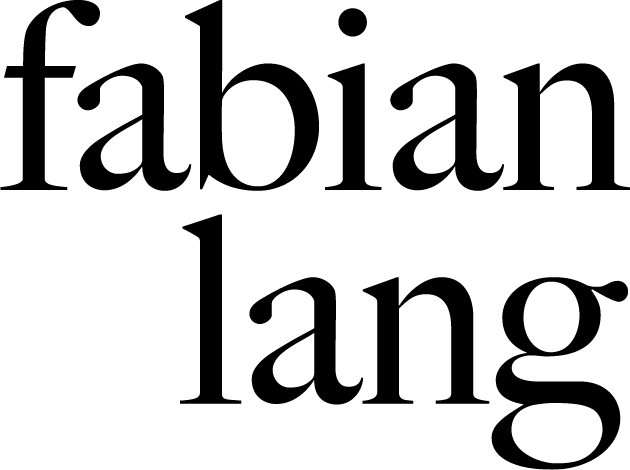ELENA ALONSO
MEMBERS WITHOUT ORDER
12 June - 20 August 2020
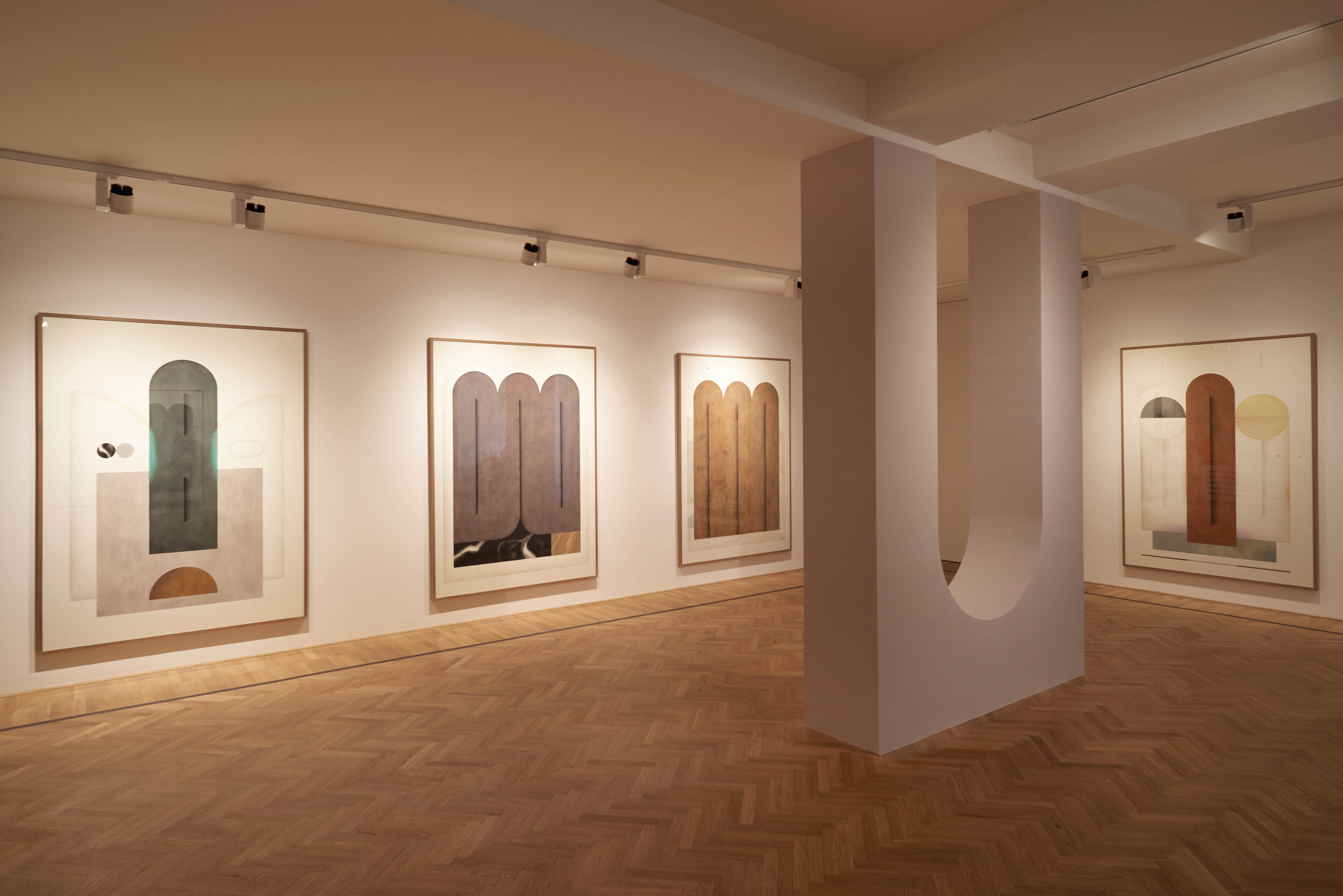

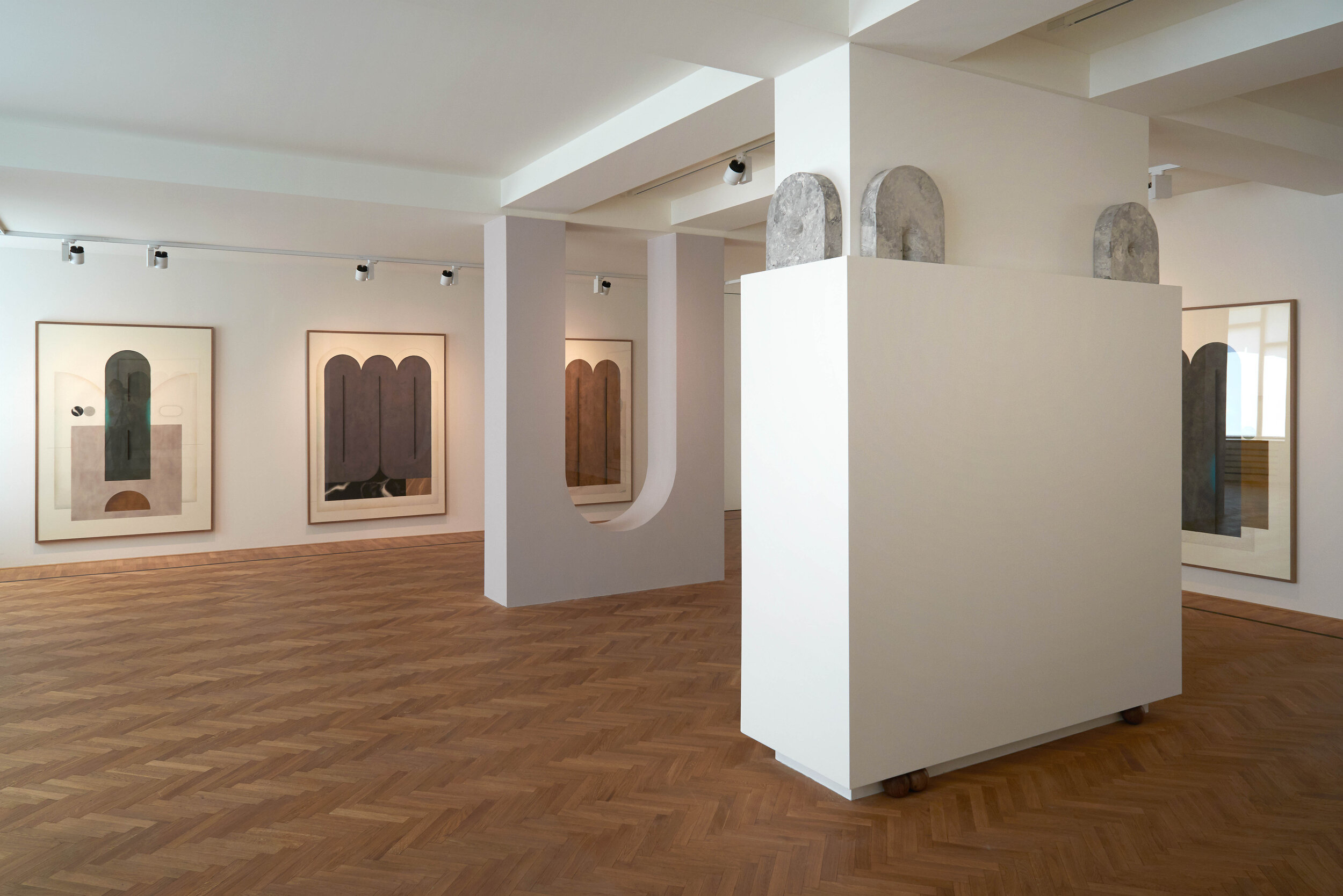











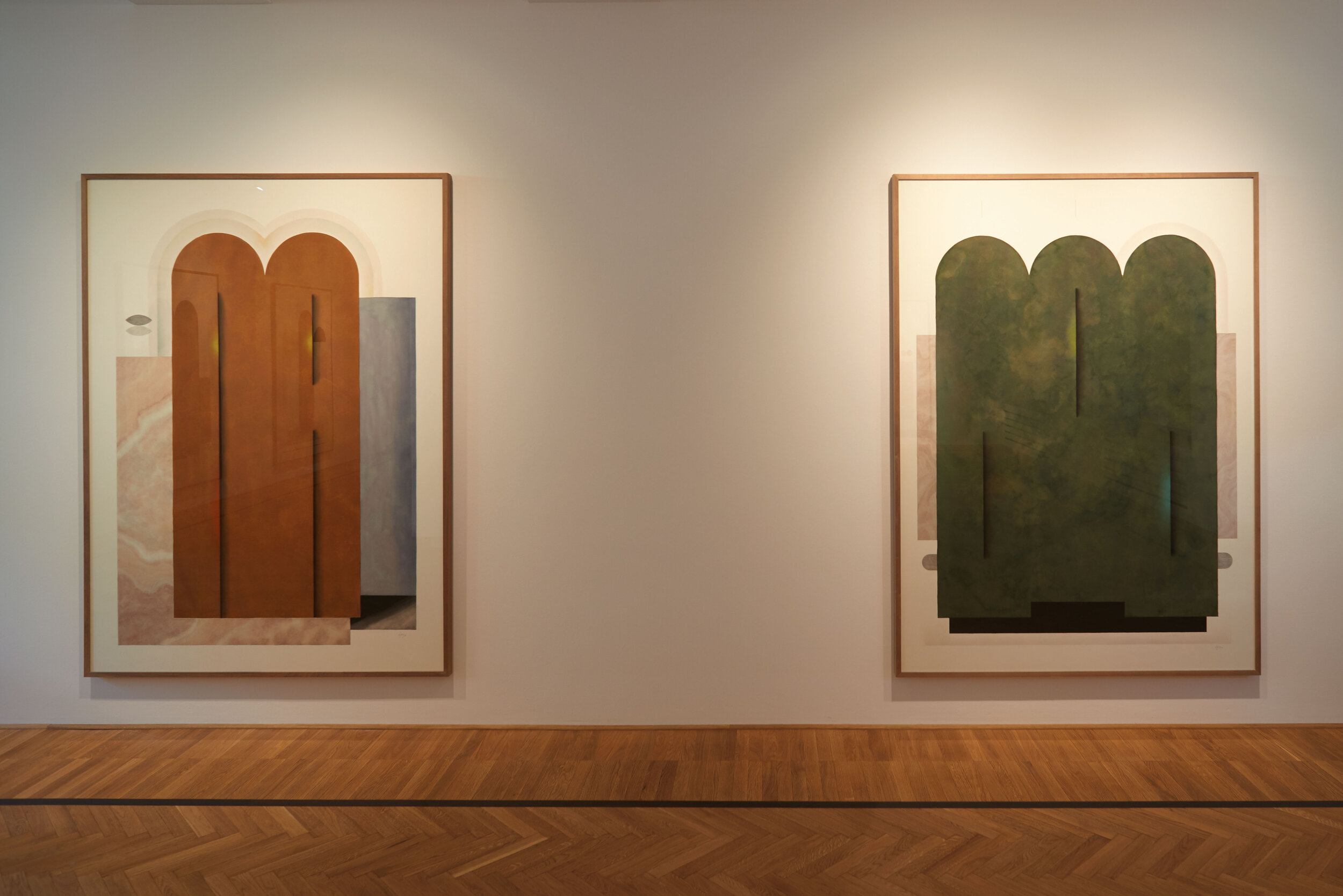
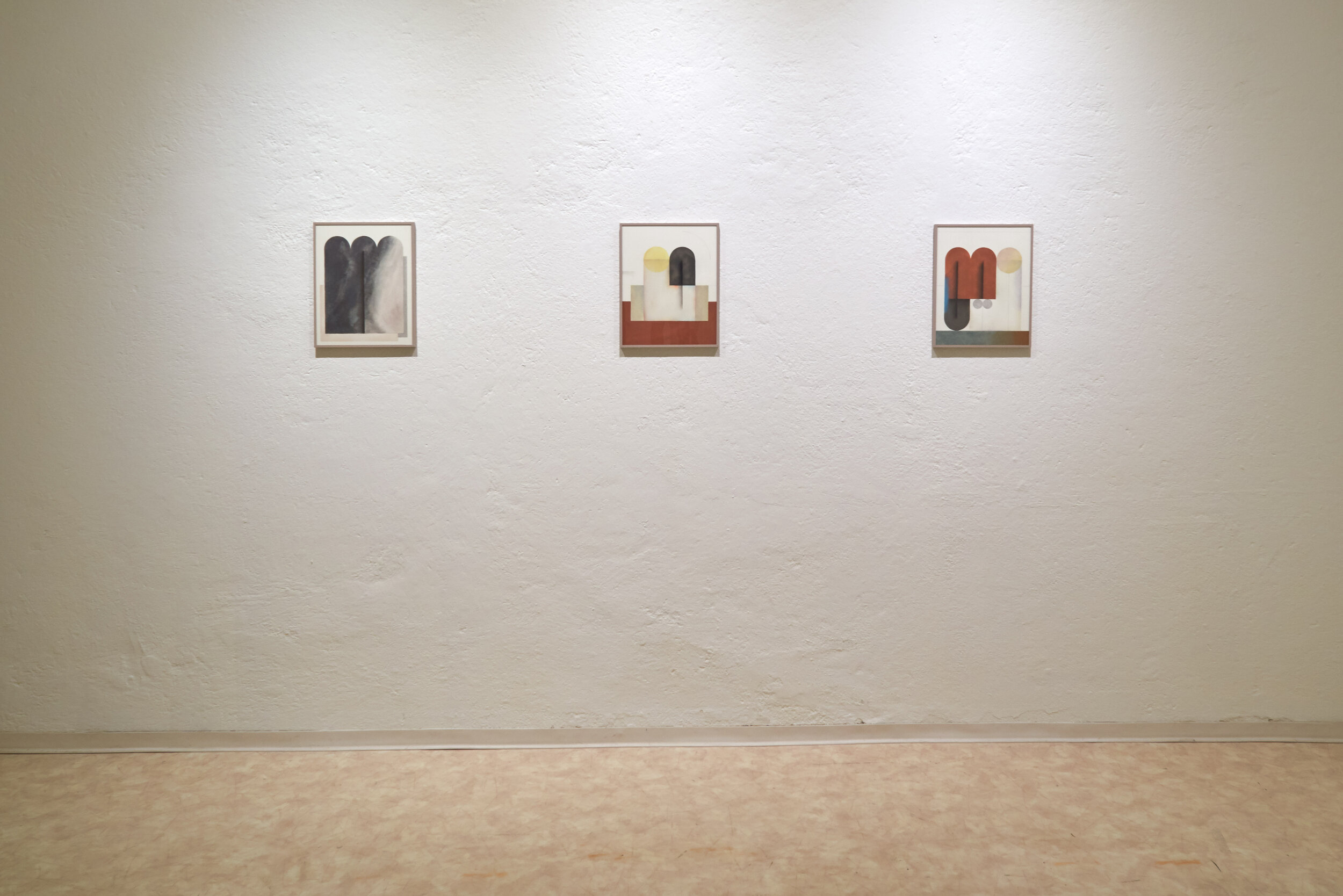


EXHIBITED WORKS:
Press release
[pdf]
What does that word conjure in your mind, reader? Members. Does it speak of belonging? Or is it more tangible a word to you – fleshy maybe? Is it heavy or is it light? Is it full?
Elena Alonso has again redefined her own formal limits with this collection of works. The ambiguous yet personable iconography central to her practice is there, but the limitless spaces she has previously assumed as context have here been populated. These volumes – for voluminous they are – are not quite architecture, nor persona, and yet they are irreconcilably both. What is clear is that they share an origin. Or if that is too presumptuous, then wherever they have come from they are now bound by membership. They are dense. They are corporeal and solid. Unlike the relativity of disparate elements enacted in her previous work, attention is here drawn to the strange, sensual bodies at the centre of these enigmatic pieces.
Where this series represents an evolution of Alonso’s practice is in her negotiation with these forms. Her interventions – for that is what they are – are deft and subtle. There is the suggestion of the surgeon at work, incising and folding tangible mass. Colour bleeds from the points of contact where hard edges meet soft bodies. To that end there is a care and sensitivity at play; a concern with the manner and limits of invasiveness that are rooted in gender theories and feminist necessity.
This effect is heightened in her turn to sculptural intervention. The four pillars central to the gallery’s own physical structure have been repurposed to create an inverse arch on one side, and monumental edifice on the other. Please, sit where the curve of this upside-down architecture allows. It is no longer a site of transition from one space into another, but a place to stop. The volume it faces has a clear language too. Above and below are frieze and plinth, capping and supporting a body of no fixed purpose. It is being supported though? The Spanish walnut balls upon which the volume’s weight seems to rest look as if they might have rolled under there quite accidentally, but somehow inevitably. Above, the same pressed, fleshy form that crowns the figures in the drawings takes three-dimensional form, clustered like misplaced acroteria upon a classical temple. There is a joyful ambivalence here as to what constitutes the display architecture and what constitutes the work.
Alonso’s own material memory comes closer to the fore here, though never reveals itself explicitly. Her tactile recollections of playing bolo palma - a game played using hand-carved wooden balls - in her grandparents’ Cantabrian town are redolent, returning to her from the stores of her subconscious. She describes these orbs, who’s production is now threatened by the loss of practical knowledge of craftsmanship, as having a clarity that has always amazed her. Somewhere, these sorts of objects occur in all our lives, in memories of touch and recognition. Alonso honours these forms and surfaces that hold cultural significance, but with an adroit alchemical turn refashions from their spirit new objects and new motifs. Each is bestowed with new meaning, each fragment made whole, and yet the origin of each sits tantalisingly close.
As ever, she is cultivating a complex and uncertain terrain between geometric abstraction and organic representation. Her allusions to the body now have shifted from suggestive figuration to something more oblique, and yet palpable. There again is that unsettling tension between the neat beauty of her compositions, which continue to flirt with the decorative, and the uncertainty of explaining exactly what one sees. Where once we described a tragic Platonism in her work, we now find an openness and vulnerability.
